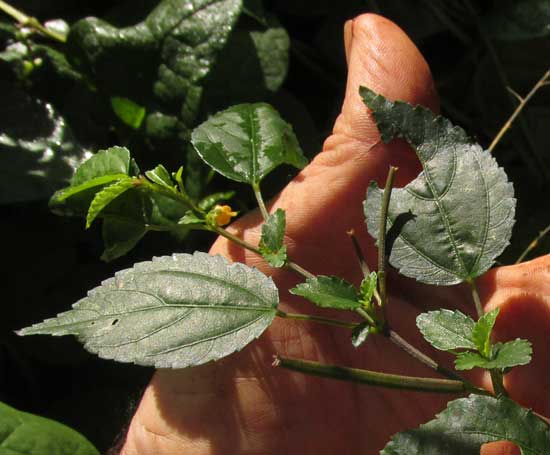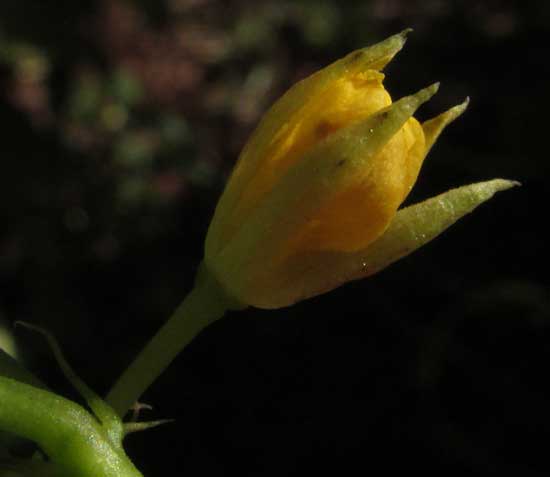Excerpts from Jim Conrad's
Naturalist Newsletter
from the December 17, 2017 Newsletter issued from Rancho Regenesis in the woods ±4kms west of Ek Balam Ruins; elevation ~40m (~130 ft), N20.876°, W88.170°; north-central Yucatán, MÉXICO
SLIPPERY BUR
Nowadays a certain hip-high, annual herb catches attention along weedy paths and roadsides less because of its yellow flowers than its long, slender, slightly curved fruits, a branch of one shown below:

If you try to snip off a branch-tip, you find that the stem is surprisingly tough and "stringy." If you tug on a leaf, instead of the leaf coming off neatly, it comes with fibers that strip away from the stem. This toughly fibrous texture, the yellow flowers and the simple, alternately arranged leaves with toothed or "dentate" margins, all suggest the big, commonly encountered Hibiscus Family, the Malvaceae. Such long, slender fruits are uncommon in that family, so you want to see if the flowers look right. I've been unable to catch a flower fully open, but one looking about ready to open is shown below:

With some sepals and stamens removed, the blossom's sexual parts are seen below:

In the Hibiscus Family you expect to see numerous stamens, typically united at their filament bases. This flower produces many stamens but if they're united at their bases it's only slightly so.
Still, in such a huge family as the Hibiscus, great variation is expected, and in the end this plant turns out to belong even though its filament bases aren't conspicuously fused. It's CORCHORUS SILIQUOSUS, native from southernmost Florida, Mexico and the Caribbean region south into South America, where it frequents many habitats, from swamp edges and beaches to limestone outcrops, sinkholes and disturbed, weedy areas. Since it occurs in the US it has some English names, the most commonly used apparently being Slippery Burr, though it's hard to see much slippery about it. -- maybe the name refers to the leaves' smooth, glossy surfaces. Maybe the slender fruits qualify for suggesting spines on a burr.
The online Biblioteca Digital de La Medicina Tradicional Mexicana reports that traditionally the Maya have used the plant to treat diarrhea. A handful of the plant, stem and all, is boiled in two liters of water, to produce a "tea" to drink.